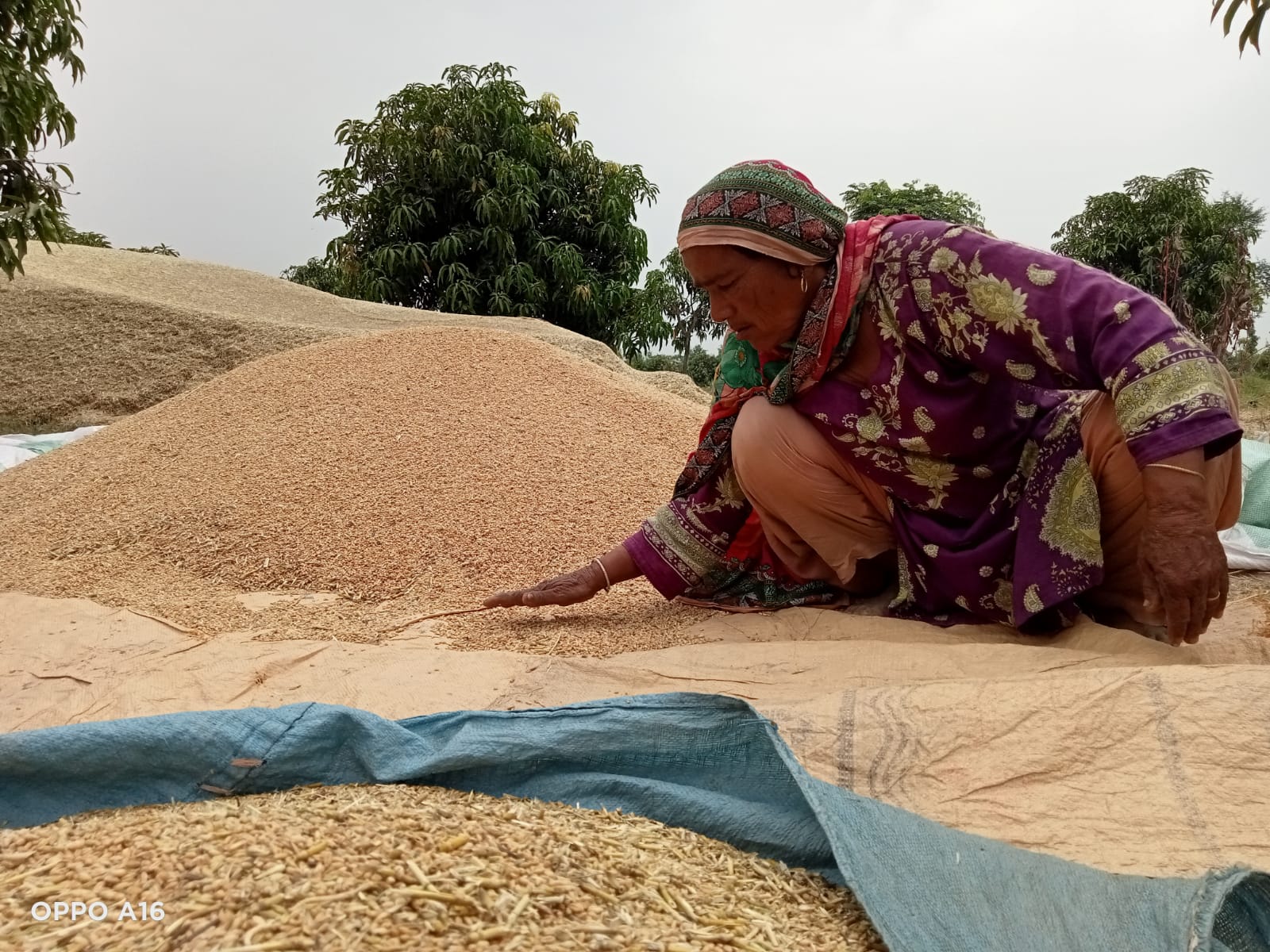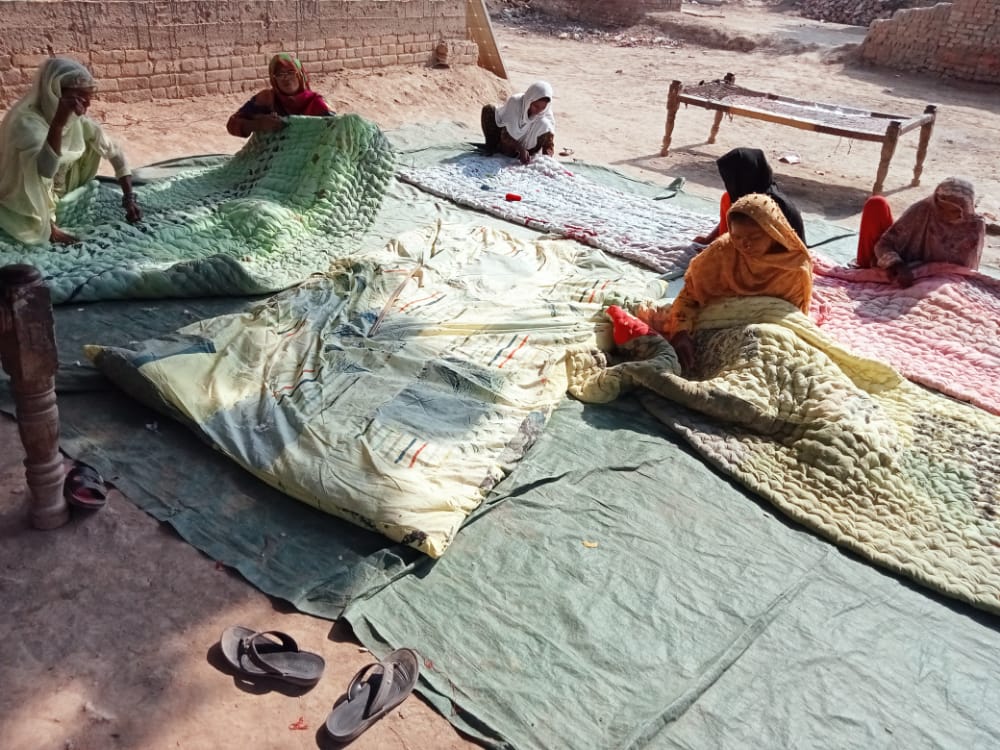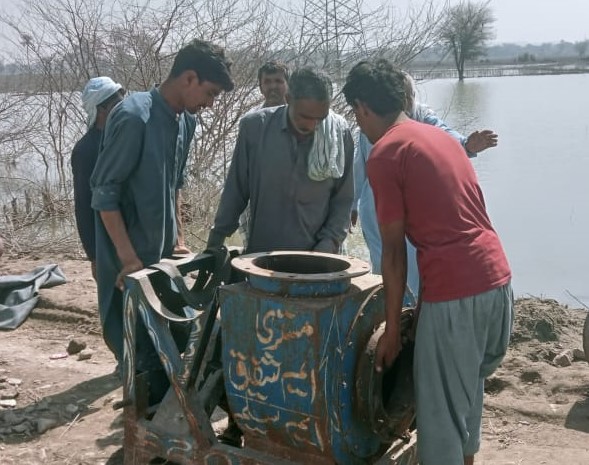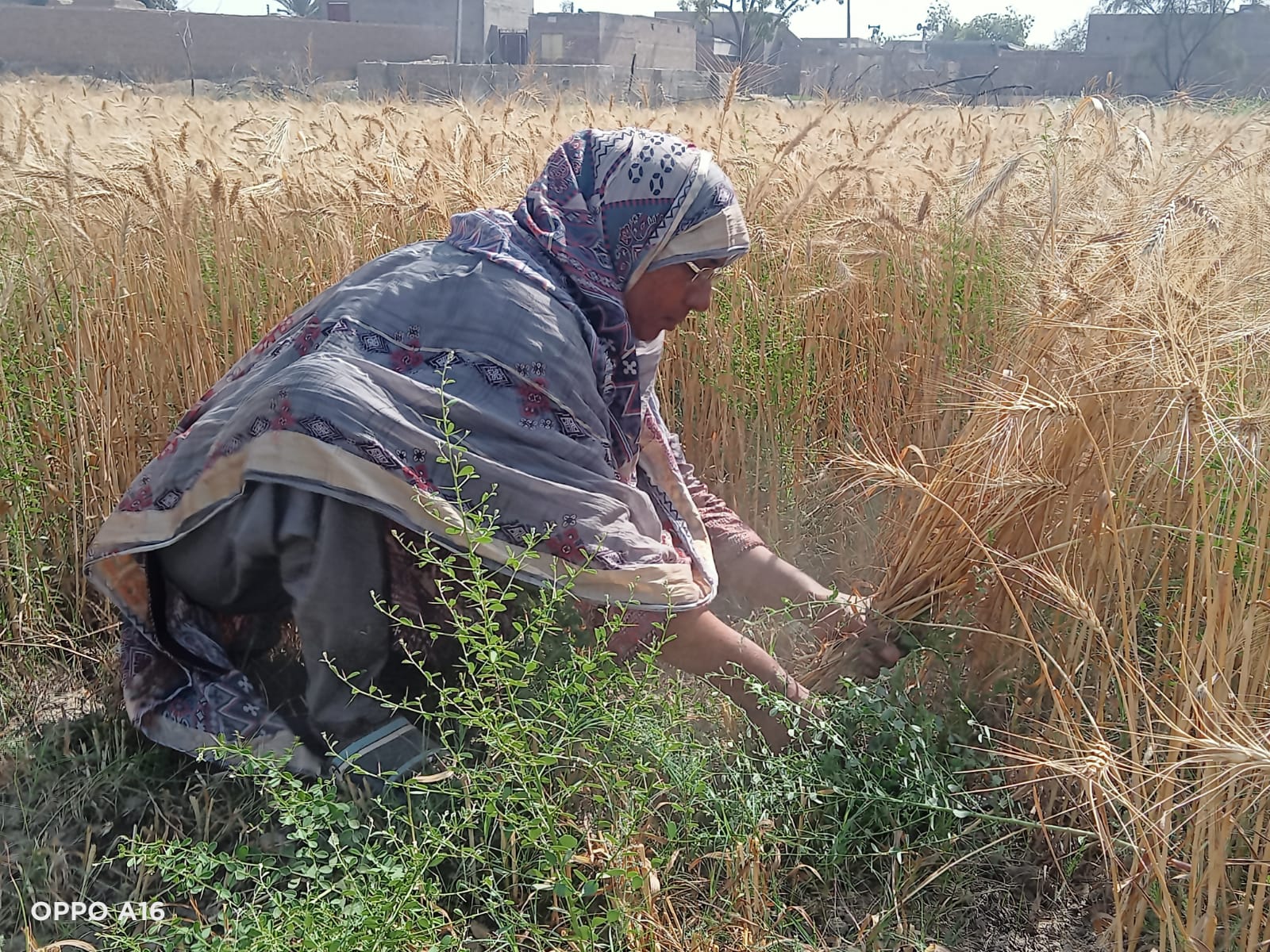
The flooding that occurred in Pakistan from June to October 2022 was the most severe and expensive flood disaster in Pakistan’s history, and also one of the most costly worldwide. Severe heatwaves linked to climate change caused unusually heavy monsoons and glacial melt that left a third of the country flooded, causing significant challenges for its communities.
Following the Pakistan floods, Global Greengrants Fund and our partner the Agroecology Fund (AEF) were able to give two grants to Society for Roots and Equity (SRE), a grassroots group formed in 1997 that works with farmers, women, and other marginalised groups in Pakistan to strengthen their attainment of political, economic, social, and environmental justice.
Global Greengrants spoke to Azra from SRE, to learn more about Pakistan’s post-flood recovery, the impact of the Global Greengrants and AEF grants, and how international conversations about loss and damage can learn from Pakistan’s flood recovery efforts.

According to Azra, loss of land is by far the biggest issue affecting the livelihoods of those impacted by the floods, most of whom earn money through farming. Those impacted reported that they were unable to cultivate crops, provide or store fodder for livestock, or rebuild and create new homes and infrastructure due to the extent of the flooding. This loss of livelihood has particularly affected women, who are primarily responsible for harvesting. SRE has observed many instances where landlords pay women, who have lost their land, to pick cotton in polluted fields. This increases their risk of disease and harm, as they exchange their health for much-needed finances. This is just one example of the many socioeconomic systems that take advantage of poor and rural communities in the aftermath of extreme crises.
Originally, SRE hoped to use their grant from Greengrants to acquire 21 consecutive acres of land to help rebuild farmers’ livelihoods. However, they could only locate 7 acres of lower-quality fragmented land. Additionally, rising seed prices made it difficult for the organization to buy and store seeds for use on the newly acquired land.
Azra noted the stark inequality in Pakistan’s land distribution, with nearly 64% of agricultural land held by feudal landlords who make up just 5% of the population. This disparity exacerbates the impact of disasters on poor and rural communities who struggle to acquire new land and seeds to restore their livelihoods after such events.
Faced with these unanticipated barriers, SRE adjusted their approach and partnered with a local organisation called Pakistan Kissan Mazdoor Tehreek (PKMT) to support the most vulnerable communities with aid, assistance, and locally purchased food rations.
The partnership meant that both organizations were able to increase their outreach, particularly to those most vulnerable, and support each other using their respective resources to overcome barriers. For example, Azra commented on the country’s increasing dependency on hybrid Green Revolution seeds, in contrast with native plant seeds which have grown in the region for centuries and are the most resilient to local climates. PKMT had seed banks in areas that didn’t flood, which helped ease the efforts of farmers recovering from the floods. Azra believes that buying locally and connecting with nearby community actors helps rebuild local economies and strengthen community resilience.

It was pivotal that SRE had the flexibility to not only adapt their use of the grant but to partner with another organization to boost the efforts of both groups and better centre the needs of local communities. As Azra pointed out, ‘community-based movements and solidarity are key.’ She went on to say: ‘strength is in the longevity of community connections, and the assurance that autonomous farmers’ movements, especially landless farmers’ movements, have a primary role in climate justice movements. Colonial and capitalist policies both internationally and nationally have become embedded in food and agriculture systems and thrust small and landless farmers into deep debt, which they are forced to pay back even amidst climate crises. This means they are facing some of the deepest climate impacts, and therefore they must be at the centre of our response at all levels.’
The flexibility to adjust strategies underscores the importance of trusting local community organizations to decide the best use of funds, even if it deviates from the original plan. It is a topic that is gaining importance as international climate mechanisms, INGOs, and governments discuss funding for Loss & Damage, a term which acknowledges the steep social, environmental, and economic impacts faced by countries least responsible for the climate crisis, compared to the biggest polluters.
The floods in Pakistan are a clear example of Loss & Damage. Despite contributing less than 1% of the world’s greenhouse gas emissions, Pakistan is recovering from a climate disaster estimated to cost billions of dollars. This begs the question: who should be held accountable for climate disasters? How can those responsible contribute to reparations and mitigation while also respecting the autonomy of local communities to decide for themselves what those reparations and mitigation must look like?
At COP27 in Egypt, countries globally agreed to create a Loss & Damage Fund that aims to redistribute financial resources from wealthy nations, primarily responsible for the climate crisis, to nations most vulnerable to the effects of climate change. Governments will continue to plan how this Fund operates at COP28 in UAE; however, while many around the world have celebrated the creation of this Fund, grassroots groups are sceptical about its implementation and effectiveness. Azra notes that high-level Loss & Damage conversations are vastly disconnected from the experiences of people confronting environmental disasters. ‘…farmers don’t even know anything about loss and damage,’ she says, further explaining how introducing new terms without appropriate actions is just another empty promise leading to contempt and mistrust from local communities in our global and national institutions. Her hope for COP28 and for the future of the Loss & Damage Fund is that ‘loss and damage has to go hand in hand with the political leadership of communities rather than the elites [i.e. influential actors and global institutions overseas] because it will be used more effectively and immediately [that way].’

If the Fund were to trust local leadership and to make resources flexible, their redistribution of resources may support more meaningful change and may truly fulfil the promise behind the intention of its creation. Azra noted the challenge of meeting donors’ financial accountability requirements, such as collecting receipts for fodder during a crisis. To her, this shows that ‘big players can’t comprehend the matters of local people’ and if institutions want to truly help those impacted by disaster, ‘always look for organisations that have a long-time relationship with the communities themselves.’ It is entirely possible for loss and damage to be mapped out on a community-level so they can build their own resilience, but it must be done in deep collaboration with the communities and support their leadership.
A year after the devastating floods in Pakistan, rural communities are still grappling with land access, threatening livelihoods and food security and leading people to move as far afield as Dubai. Azra captures the urgency, stating ‘…there are so many unseen, invisible impacts. And if you don’t have control over natural resources, especially land, seed, and livestock, there’s no help.’ SRE along with other local and national organisations are linking land and food issues with climate justice, echoing Azra’s words: ‘the word land is critical. That’s what is getting destroyed. That’s where food happens. That’s where we live. That’s where the animals live. If there is no land, how will we live?’ As the climate crisis progresses, it will be critical for funders and international crisis support mechanisms to prioritise addressing these issues with care, equity, and community in order to create sustainable, meaningful change.
